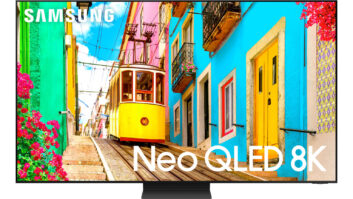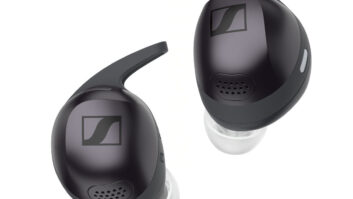Rational pricing took a holiday over Thanksgiving weekend.
While Black Friday promotions have become an annual ritual, with no category more competitive than consumer electronics, the breadth and depth of CE discounting on the morning after Thanksgiving was jaw dropping, even by industry standards.
No brand, whether tertiary or tier one, was immune, although Panasonic, through its 42W-inch plasma HDTV, was perhaps the most prominent. The PDP, a highly-regarded benchmark product, hit a low of $1,000 on Friday morning at Best Buy, down $1,500 from a minimum advertised price (MAP) of $2,500 just months prior.
The intensity of the discounting could well be traced to Wal-Mart, which publicly targeted electronics as a promotional battleground this holiday season, and was the first to break MAP on the Panasonic plasma. Looking to avoid the fate of the top toy chains, which succumbed to similar tactics by Wal-Mart two years ago, Best Buy took the gloves off by pressuring vendors to drop MAP over Thanksgiving weekend, dealers told TWICE.
The result was a pricing pandemonium that featured such early-bird specials as:
- Acer’s Aspire 1.46GHz notebook computer for $200 (Micro Center)
- Canon’s 7.1 megapixel ELPH SD550 digital camera for $197 (Fry’s)
- Olevia’s 23W-inch LCD-TV for $297 (ABC Warehouse)
- Panasonic’s PV-GS29 MiniDV camcorder for $150 (Circuit City)
- Toshiba’s 42W-inch plasma HDTV for $1,000 (hhgregg)
Yet there was a method to the apparent madness, as many dealers generated overflow traffic and attached high-margin accessories to loss-leader purchases (see p. 16). Indeed, total Black Friday sales were up 6 percent year-over-year to an estimated $9 billion according to retail analyst ShopperTrak, while the average weekend spend was up 18.9 percent year-over-year to $360.15 per shopper, according to a survey by the National Retail Federation (NRF). Roughly one-third of the estimated 140 million shoppers who hit the stores between Thursday and Sunday purchased CE products and computer-related accessories, the NRF said, while music, movie and video game software (plus books) tied apparel as the most-shopped category at 41.4 percent.
“Each year consumers have greater expectations for doorbuster specials, forcing retailers to raise the bar,” said NRF president/CEO Tracy Mullin. “This year, stores did not disappoint as deals on high definition TVs and apparel were just too good to pass up, bringing millions of people out of their Thanksgiving cocoons.”
This was good news for nervous retailers, who take in about 10 percent of their total holiday revenue over the Thanksgiving weekend, according to Lehman Brothers analyst Alan Rifkin — while the extended holiday period, he pointed out, can account for as much as 40 percent of the year’s entire take.
What’s more, Wal-Mart’s take-no-prisoners CE strategy may have backfired under the withering barrage of brand name promotions by specialty chains (see pricing table, p. 16). The discounter, whose top Friday morning offering was a 42W-inch Viore-branded plasma HDTV for $988, indicated that its same-store sales for the month of November actually fell 0.5 percent, representing its first comp-store decline in nearly 10 years, and that the outlook for December is only marginally better. A Web site outage during peak shopping hours on Friday, caused by “an unanticipated traffic surge” the company said, may have also contributed to the downturn. The weakness was picked up by the NRF survey, which found that while discount stores remained the top weekend shopping destination, channel traffic dropped off substantially from last year (49.6 percent vs. 60.7 percent).
In the fight for footprints, retailers also opened their doors earlier. Many indoor malls welcomed shoppers at midnight on Black Friday eve, while CompUSA was open for business at 9 p.m., prompting a New York Times editorial to decry shopping on Thanksgiving as “something new and sinister.” Nevertheless, shoppers responded to the siren song of early-bird sales, with one-third arriving at their first retail destination before 6 a.m. and nearly 60 percent hitting their first store by 9 a.m., according to the NRF.
And what of the balance of the season? Some analysts wondered what impact the rampant discounting will have on profitability, and were concerned that the weekend buying spree may have simply pulled future CE demand forward. Dealers themselves, including Abt Electronics president Mike Abt, questioned whether consumers could readily recalibrate the price-value equation for CE products after enjoying the Thanksgiving giveaways.
But most observers believe that the enthusiasm demonstrated by consumers over the weekend bodes well for December sales. “Though retailers know the holiday season is far from over, they are encouraged by the amount of excitement and traffic that their Black Friday promotions have generated,” said NRF’s Mullin.
While Bill Martin, co-founder of ShopperTrak, doesn’t believe Black Friday is “the greatest bellwether for the season’s performance,” he considered the larger than expected turnout “a nice shot in the arm for the industry.”
Wayne Best, senior VP for strategic economic analysis for Visa USA, said that merchants “should be feeling more in the holiday spirit than in past years” based on Black Friday sales and the steady growth in Visa volume over the preceding three weeks.
And Lehman Brothers’ Rifkin, while still maintaining a cautious outlook for the holiday season overall, held out CE as a “pocket of strength,” and projected seasonal same store sales of 3.2 percent for the sector.
But those sales gains won’t come without a fight. On the Monday following Thanksgiving weekend, Circuit City raised the ante on its 110-percent price guarantee by pledging to beat any competitor’s price on any TV by 25 percent of the difference, or to refund 125 percent of the difference if the SKU is found cheaper elsewhere within 30 days of purchase.
Similarly, Best Buy, despite its service-oriented customer-centric strategy, maintained its line-in-the-sand stance on price, according to an account by CNN/Money. “We will match or beat any price in the marketplace,” CEO Brad Anderson said last week during a Fortune magazine forum, in response to questions about Wal-Mart’s pricing. When your store is called “Best Buy” he said, you have to.













